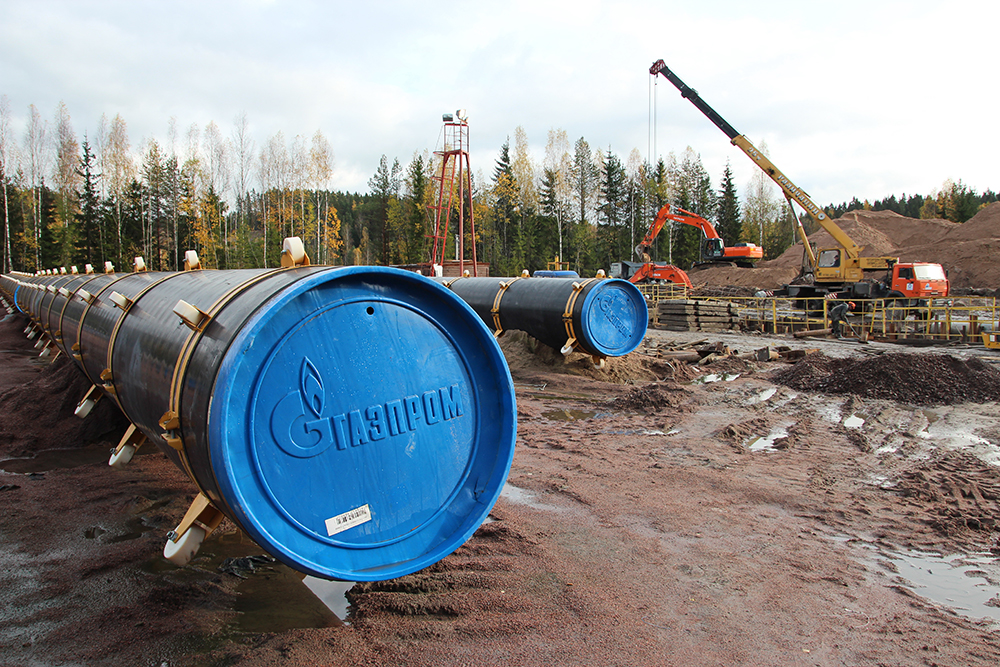January 2025, Vol. 252, No. 1
Features
Russia Focusing on Domestic Gas Pipelines Network for Now
By Eugene Gerden, P&GJ International Correspondent
(P&GJ) — Russia plans to complete unification of its gas pipelines system within the next several years with the aim to ensure stable gas supplies within the country and to stimulate domestic gas consumption.
Despite the fact that Russia has one of the world’s longest gas pipelines’ network, which has the overall length of 106,875 miles (172,000 km), prior to beginning of Russian-Ukranian war, most of its was mostly oriented on exports to West, particularly the EU.
The beginning of the war led to the loss of significant part of export contracts for Russia and forced the local state to pay more attention for the development of the domestic pipelines’ network.
Historically, most of Russian gas pipelines were located close to its western borders. At the same time, the level of development of pipelines’ infrastructure in the Eastern Russia, the Siberian region and the Far East was significantly lower those in Western part of the country.
After the Nord Streams pipelines’ sabotage and the suspension of most of gas exports to the EU (primarily via Yamal-Europe gas pipeline), pipeline gas exports from Russia fell more than 2 times. Last year Gazprom showed a loss for the first time in 25 years, which amounted to $6,41 billion (629 billion rubles) and created serious problems for the company.
To compensate these losses, new gas pipelines need to be built, although the current financial reserves of Russia are seriously limited due to the ongoing war with Ukraine and militarization of the country.
In general, future prospects of the Russian gas and pipelines’ sector are cloudy, as the EU plans to completely refuse from the supplies of Russian gas by 2027, while other Western buyers consume too small volumes at present to ensure stable revenue to the state budget.
According to experts of the Russian Rossyiskaya Gazeta business publication, currently the Russian pipeline gas system has only two priority export destinations left – China and Turkey. But even on these directions, the growth is limited. According to the Russian Ministry of Energy, in 2023 exports of Russian pipeline gas amounted to only 996 Bcm, compared to 185 Bcm, compared to 185 billion of cubic meters in 2021.
At the same time the decline of exports leads to the reduction of gas production in Russia, which already fell from 762.3 Bcm in 2021 to 636.9 Bcm in 2023. According to the Russian Minister of Energy Alexander Novak, the current gas penetration rate of the country is estimated at only 74%.
Despite the existing wide pipelines’ network, many regions of Russia experience the lack of reliable pipelines’ infrastructure. Still, according to earlier statements made by head of Gazprom Alexey Miller, the company plans to allocate a record $2.75 billion for the gasification of Russian regions, and to completely gasify Russia by 2030.
A significant drop of exports forces the Russian government to pay more attention for the development of domestic gas pipelines’ system. As part of state plans, domestic gas consumption should significantly increase within the next several years, that will take place by more active gasification of vast Russian province and the growth of industrial gas consumption within the country.
Still, one of the problems, which may prevent implementation of these plans is that the existing gas pipelines’ infrastructure in Russia was mainly built to export large volumes of gas to western markets. As a rule, most of this infrastructure was connected to the largest gas deposits in Western Siberia (where Russia’s biggest gas reserves are located).

In general, the Russian gas transportation system actually consists of three isolated segments – the Western (which until recently provided most of gas supplies to Europe), the Eastern Siberian (Power of Siberia) and the Far Eastern (the Sakhalin-Khabarovsk-Vladivostok gas pipeline).
The government plans that the development of domestic pipelines’ infrastructure will take place by the connection of the Eastern Siberian and Far Eastern pipelines’ systems (in the so-called Eastern Gas Supply System) at the initial stage and the entire western and eastern pipelines’ systems of the country at the second.
The first stage of the project involves connecting the already operating Power of Siberia and Sakhalin-Khabarovsk-Vladivostok gas pipelines. For this purpose, the construction of the 497-mile (800-km) Belogorsk-Khabarovsk section of the "Eastern Gas Supply System (EGSS)" began in March of the current year.
In general, the EGSS will have the overall length of more than 3,106 miles (5,000 km), while, according to an official spokesman of Gazprom, the main purpose of the project is to develop gas transmission capacities in the East of Russia and their further unification with the gas infrastructure in the western part of the country.
“This will ensure additional reliability and flexibility of gas supplies to domestic consumers and will open up new opportunities for the development of gasification of the regions of Siberia and the Far East,” a Gazprom official said.
The project involves the use of innovative pipes designed for increased working pressure of 150 atmospheres (14.7 MPa) made of high-strength steel. So far, the production of new generation large-diameter pipes made of K70 steel has been started in several plants in Russia. The use of pipes designed for increased pressure will allow the placement of compressor stations - at a longer distance from each other, reducing the cost of the project.
As for Russian Far East, while the region has some major gas fields, their active development has not begun yet. One of the reasons is their location on sea shelf, which significantly complicates their development during present days when Russia experiences the lack of necessary western technologies for the development of these deposits.
Still, according to Gazprom, given that gas demand in the Far East is expected to grow from 4.3 Bcm in 2023 to 22 billion in 2035, (while in Eastern Siberia from almost zero to 4.7 billion cubic meters) the increase of gas production within the country and the development of pipelines’ infrastructure will be considered as one of the priorities of the state in years to come.
Currently, the worst situation with gas supply in Russia is in Siberia: in the Irkutsk region the level of gasification is 1%, in Kuzbass – more than 5%, in Krasnoyarsk Krai, Khakassia and Tuva there is no main gas pipeline at all. That leads to serious problems with ecology in these regions, which continue to use coal as the main energy source.
In this regard, the development of Far East and Siberian pipelines’ system is considered as a strategically important direction by the Russian government at present. This is also important due to the location of a number of energy-intensive enterprises (primarily large-scale metallurgical and mining complexes) in the Far East and along the Sakhalin-Khabarovsk-Vladivostok gas pipeline route, which are in acute need of stable gas supplies.
In addition, stable supplies of the pipelines’ gas will be important for the construction of thermal power plants in the Far East, given that the region operates the smallest and less developed energy system in the country.
Analysts believe as a result of the unification of the eastern gas transmission systems, the pace of gasification of Russian regions will significantly accelerate, and natural gas consumption in Russia will increase by 0.8-1.2%. Currently, the pace of gasification of Russian regions does not exceed 1% per year, and domestic gas consumption in Russia in 2023 amounted to 501 Bcm.
Still, as most of analysts believe, a further development of domestic gas sector in Russia along with building of new pipelines’ infrastructure will require from Gazprom to increase domestic gas prices by at least two times otherwise implementation of most of domestic projects will be unprofitable for the company.
As for gas exports, Russia has commitments to reach the planned capacity of the Power of Siberia gas pipeline to China – up to 38 Bcm in 2025, and an agreement on the deliveries of up to 10 Bcm via the so-called Far East route (a branch to China from the Sakhalin-Khabarovsk-Vladivostok gas pipeline).
Its resource base will be the deposits of the Okhotsk Sea shelf. Exports via the Far Eastern route should begin in the coming years, despite the fact that its resource base is seriously limited, while there is still no clarity regarding the launch dates of the Yuzhno-Kirinskoye gas condensate field, which was included in the US sanctions list as far back in 2015.
This is an offshore field, the reserves of which are estimated at 814.5 Bcm of gas. Its design production capacity is 21 Bcm/a. The commissioning of the field has been postponed several times.
There are some hopes on the launch of Power Siberia 2 pipeline, which involves the supplies of up to 50 Bcm of Russian gas to China, however implementation of the project is still delayed due to plans of China to purchase this gas at prices significantly lower those of prices for gas, supplied via Power Siberia project (about $250 per 1,000 cubic meters).






Comments